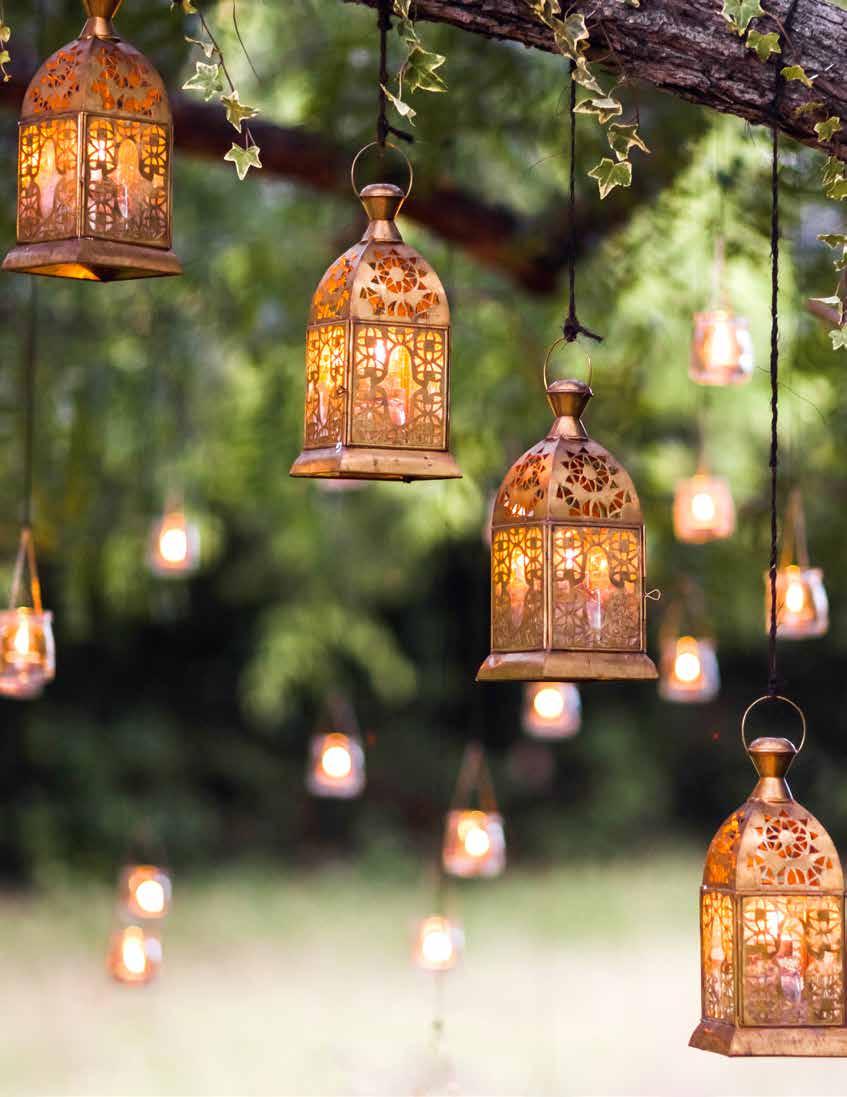
3 minute read
Made in the Shade
UPGRADE YOUR HOME’S OUTDOOR LIVING FEATURES IN 2020
You’ve had your fill of holiday regaling and hosting guests indoors over these cold winter months, and you’re eager to take your entertaining ambitions outdoors once the weather breaks. Problem is, your backyard isn’t adequately equipped to accommodate alfresco gettogethers. Fortunately, you’ve got time to remedy the matter by planning ahead and prepping a proper outdoor living area that can be ready by springtime.
Advertisement
“Research shows that Americans entertain guests in their homes at least once a month, which means a great outdoor entertainment space in the warmer months is a must-have,” says Doug Mucher, product manager for CertainTeed in Malvern, Pennsylvania. “Today’s homeowners see an outdoor living space as an extension of their indoor living spaces. It’s also a less expensive way to increase the square footage of your home.”
Taryn Bone, architect, owner and creative director of Bone Collective Studio in Boston says technology backlash has a lot to do with this trend, too.
“Because technology has become so rampant, people are ready to connect more with nature. The easiest way to do that for most people on a regular basis is to create a backyard oasis,” notes Bone. “Many homeowners are eager to gather around the fire pit in their backyard with their friends and ignore their iPhones for a while and just talk.”
What’s more, enhanced outdoor living on your property fits within the “stay-cation” movement.
“More people are choosing to keep their dollars within their own dwellings instead of spending money on vacations,” Robert Bergeron with Frisco, Texasheadquartered furniture manufacturer Sunnyland Outdoor Living says. Bergeron adds that the goal of creating an outdoor living area should be to “create a comfortable and harmonious environment that blends in with your current home style while also being functional and easy to maintain.”
Components that comprise such spaces typically include comfortable, cushion-topped, outdoor-rated furniture like a sofa or bench, chairs, and/or seat walls; table or fire pit; pergola, awning or large umbrella; and a grill or outdoor kitchen cook station.
“Seat walls are huge right now because they help define the boundary of the outdoor space while also providing extra seating,” says Jay Worth with Tomlinson Bomberger, a landscape firm in Lancaster, Pennsylvania. “And fire pits, fire bowls or chimeneas remain popular because fire is fascinating to watch, is fun to cook food over, and seems to allow for long conversations.” entertaining? Are you cooking a full meal outside or simply grilling? These are all factors that determine the size and layout of the outdoor area you’re planning,” suggests Worth.
Next, ponder the layout of your property.
“Create something that makes sense for your family and your outdoor available space. For example, if you have a big backyard with ample room, a large deck with lots of furniture would be a great addition,” Mucher recommends. “However, a smaller yard may warrant a nice patio area and garden instead — perhaps one surrounded by a privacy fence with sound-blocking ability.”
Bergeron advises avoiding areas directly under trees, since tree sap, tree pollens, and bird droppings can make your items look bad quickly.
Weather-resistant full dining tables are in demand, too.
“Many people actually forgo an interior dining room and opt for a more expensive and expansive exterior dining situation nowadays,” says Bone.
Try to choose pieces that harmonize with your indoor furniture, if possible.
“Don’t buy furniture that doesn’t fit the look of your home or is totally opposite to what your interior looks like. This should be an extension of the inside to outside,” Bergeron says.
Shopping for these items is the fun part. First, however, it’s essential to plan the space carefully.
“Consider how you actually use the space. How often do you entertain? How many people do you have over when you’re “That’s why a covered area is often best for outdoor entertaining,” says Bergeron.
Worth agrees.
“Low-lying areas and areas within about five feet of a tree or brush line should be avoided to prevent water problems and to keep away from insects,” adds Worth. “You also want to make sure that your chosen deck or patio area has a firm foundation that can support the weight of your outdoor living equipment.”
Keep off the grass if you can, as well.
“Most people want a yard with some kind of grass or other plantings for the beauty and softness that nature provides, so place your furniture away from it,” Bone suggests.











